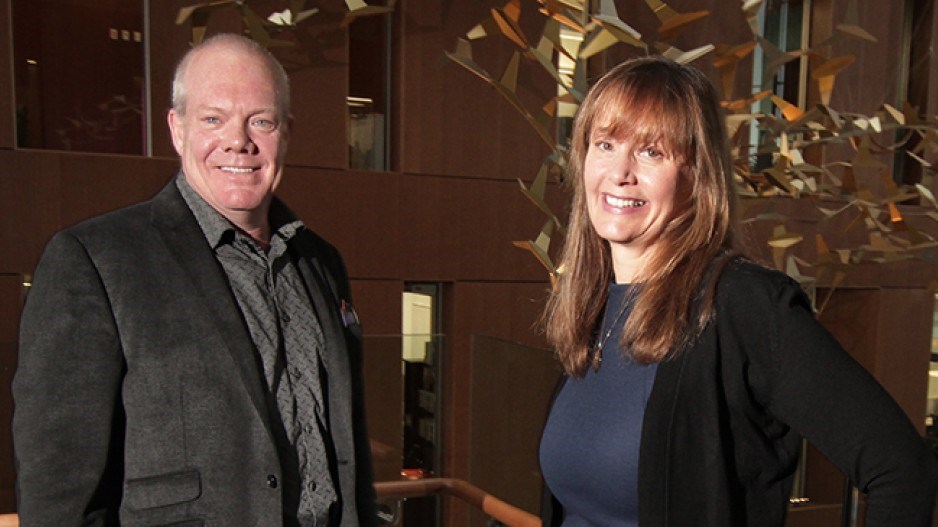By 2030, almost a quarter of the country’s population will be senior citizens, Statistics Canada estimates. The resulting labour crunch will be felt across the country, but Surrey is one city that looks to have a leg up on the shifting demographics.
A 2012 City of Surrey report found that a quarter of the city’s population was under 19. Andrew Petter, president and vice-chancellor of Simon Fraser University, (SFU) noted that since the school’s Surrey City Centre campus opened in 2002, high school graduation and university enrolment rates across the city have risen, and, he said, the city’s youth stand out for their positive entrepreneurial outlook.
“If you ask students today what they want to do after graduation, they won’t say, ‘I want to get a good job,’” Petter said. “They will say ‘I want to start a business. I want to start my own business.’”
Shauna Sylvester, the director of SFU’s Centre for Dialogue, who recently hosted the university’s Thrive! Surrey in 2030 public square event, agreed that the city’s youth are charged with creative business spirit.
“I would definitely call Surrey an entrepreneurial city,” said Sylvester. “I facilitate groups around the country, and there’s something about Surrey, this ‘get it done’ mentality. They don’t want to spend a lot of time talking about ideas; they want to get down to work and get things happening. So it’s a very entrepreneurial and innovative spirit there. They clearly have a lot of social issues to deal with, but they’re not letting those define them as a city.”
By 2030, Surrey is also expected to be B.C.’s largest city. In each of the past five years its total construction value has surpassed $1 billion, including 18,000 homes and $186 million worth of commercial construction in 2014 alone.
According to a recent StatCan report, there are now more people aged 65 and over than there are under 15 across the country. Replenishing the workforce is now a priority, said Surrey Coun. Bruce Hayne.
“Traditionally Surrey has been a bedroom community to Vancouver, and that is rapidly changing,” he said. “Right now we have roughly 172,000 jobs in terms of the 2012 statistics, and the estimates for employment for 2030 are to take that to about 270,000.”
According to StatCan, Surrey, along with New Westminster, had the highest unemployment rate in Metro Vancouver at 7.9%. The average rate of unemployment across the region is 7.1%.
Hayne added that one way to keep pace with growth is to start attracting more white-collar jobs to Surrey.




